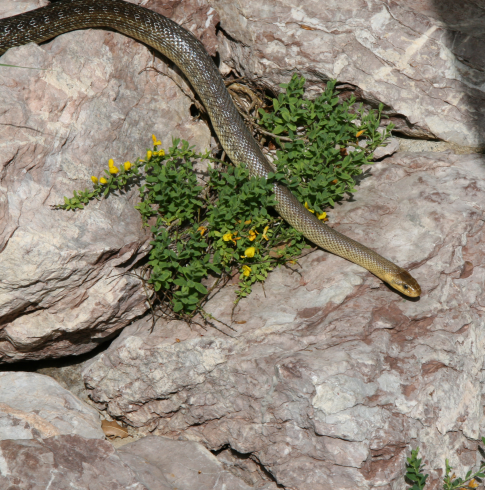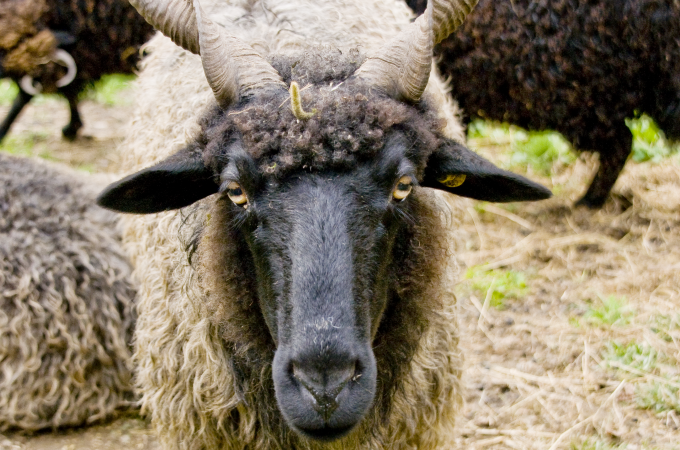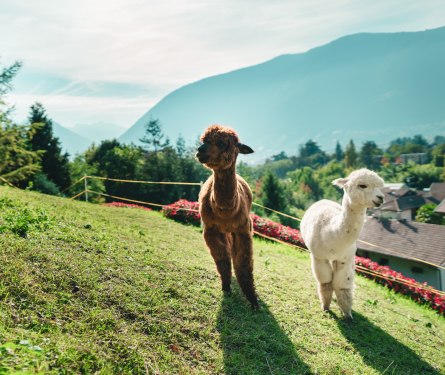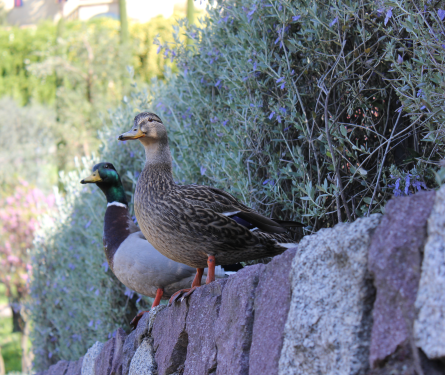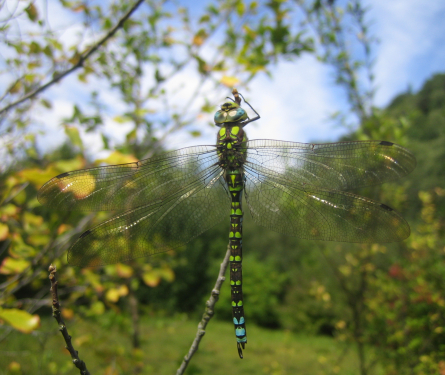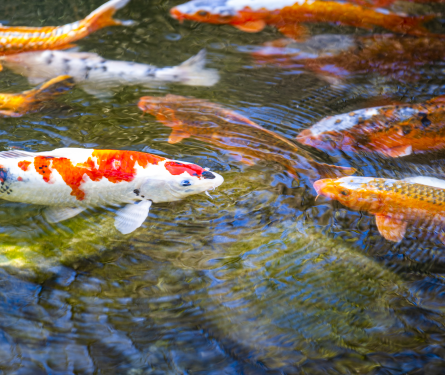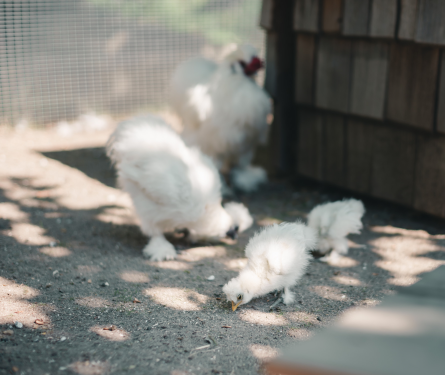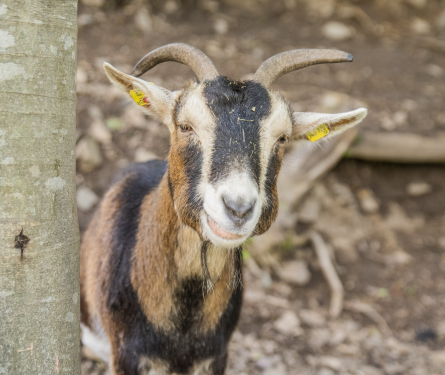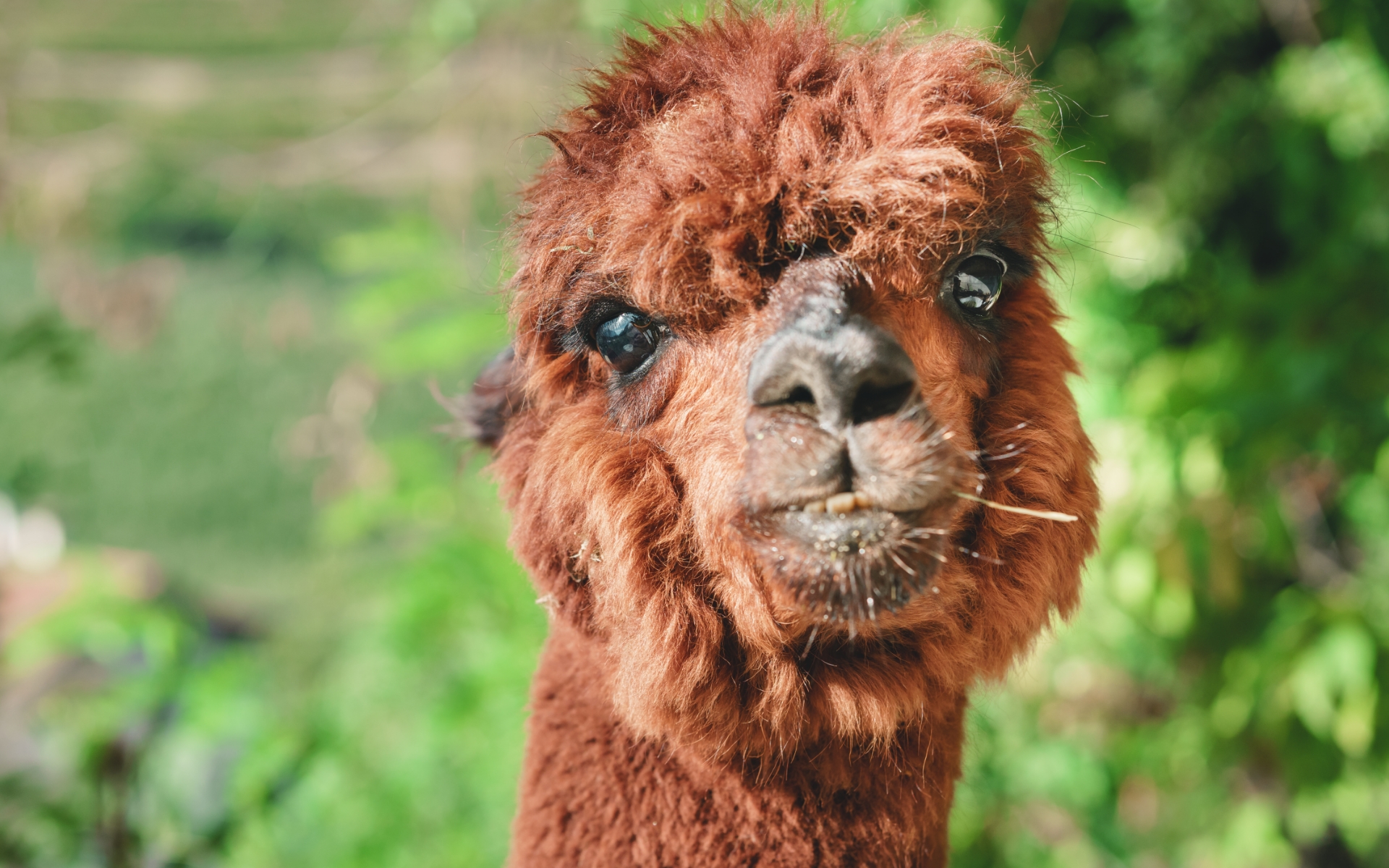
Animals at Trauttmansdorff
The Gardens of Trauttmansdorff Castle animals represent an extra pleasure for the whole family. The Trauttmansdorff animals have found the gardens to be a wonderful home.
In the terrarium inside the Glass House, you’ll be able to enjoy a close encounter with indigenous and exotic insects, spiders, amphibians and reptiles.
Exotic and local animals
A tour through the Gardens brings you into contact with rainbow lorikeets, macaws, Hungarian racka sheep, mountain goats, alpacas and guinea pigs.
With a little bit of luck, you may also see some endangered local animals.
They have found a new home here because Trauttmansdorff has a variety of different habitats that are merged into the surrounding nature landscape. Black and yellow fire salamanders emerge when the weather is damp; in the early morning, gray herons can regularly be spotted on the Water Lily Pond, while warmth-loving green lizards are sunbathing on the promenades. Large eye-catching stag beetles also find a refuge here; sometimes deer, badgers and foxes also get lost in the Gardens.
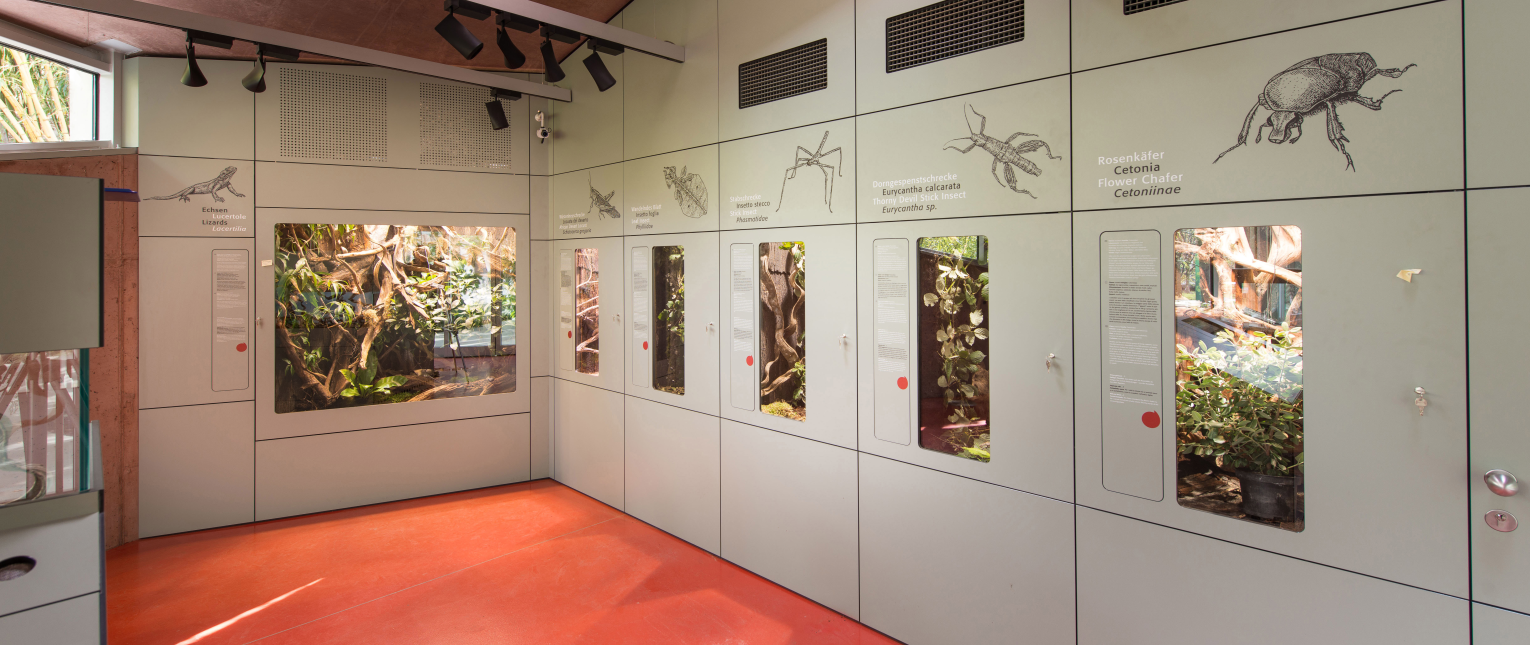
The Terrarium
In the back area of the Glass House you’ll find the Terrarium, where industrious leafcutter ants, shy lizards, dazzling rose chafers and bizarre stick insects are displayed. Like walking leaves, the appearance of stick insects mimics parts of plants found in their environment, such as bark, twigs or leaves, camouflaging them from predators. At Trauttmansdorff too, these masters of camouflage can be seen only upon closer inspection.
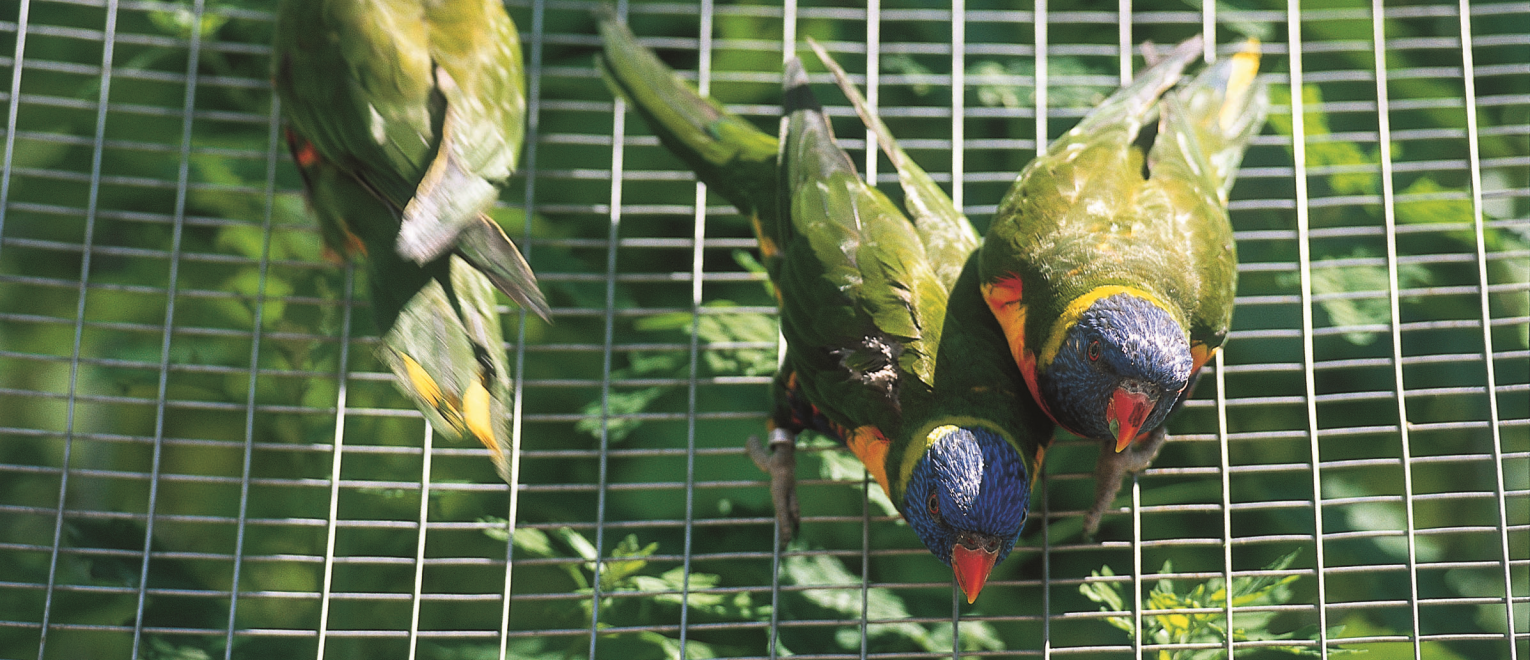
Aviary
Trauttmansdorff’s Aviary is quite large, with an area of 80 square meters and a height of 10 metres, and is situated at one of the highest points of the Gardens.
Lories and macaws populate the Aviary. These birds have all adapted to Merano’s climatic conditions, regardless of where they come from, because they can retreat into a space built into the mountainside in winter. Keepers feed the birds several times a day, according to species. The bare tree trunks serve as places to climb and perch – especially for the lories, which are considered to be the most agile climbers among the parrots.

